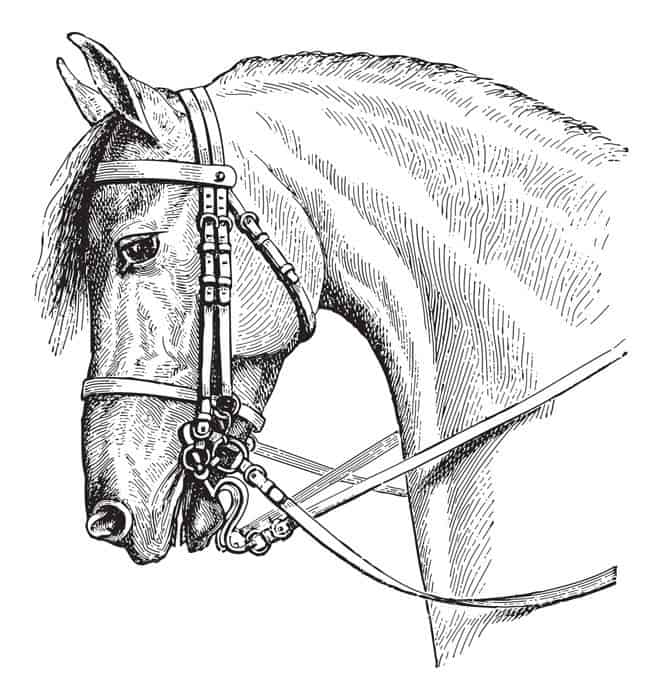There are many different types of pets but one of the most popular domesticated types of animals is the horse. People describe their “relationship” with a horse as “calming” and “peaceful.” Playing online casino games may offer fun-filled entertainment but only an animal as noble and faithful as a horse can engender the kind of devotion that a horse fancier feels towards his faithful friend.
Some horses are remembered long after their deaths, either for actions that they’ve undertaken or trials that they withstood. Some of the most noteworthy of these historical hoses include:
Beautiful Jim Key
Beautiful Jim Key was a performing horse but what a performer he was! The four-legged equine was said to be able to read and write, do math, make change with money (for “numbers below thirty”) and cite Bible passages “where the horse is mentioned.”
Jim Key belonged to “Dr.” William Key, a former slave who was a self-trained veterinarian. Key traveled with Jim Key around the United States, displaying Jim Key’s special abilities while promoting the cause of kindness to animals. Jim Key appeared at venues from Atlantic City to Chicago including New York’s Madison Square Garden and the 1904 St. Louis World’s Fair.
Jim Key was promoted by A.R. Rogers. President William McKinley saw Jim Key at a Tennessee exposition and commented “This is the most astonishing and entertaining exhibition I have ever witnessed.” The President also used the opportunity to remind the public that Jim Key was an example of what “kindness and patience” could accomplish.
Sergeant Reckless
The U.S. Army doesn’t give a military rank to many 4-legged creatures but it did bestow the rank of Sergeant on Sergeant Reckless, a horse who performed valiantly during the Korean War. The female Mongolian mare was purchased by members of a Marine unit during the Korean War and trained to serve as a pack horse.
She became part of the unit and was accustomed to roaming freely through the camp where the soldiers would feed her the same grub that they themselves were eating. Her service for the Recoilless Rifle Platoon in the 1st Marine Division’s 5th Marine Regiment earned her the battlefield rank of corporal and then a battlefield promotion to sergeant.
She is best remembered for supplying front line units during the battle for Outpost Vegas when, in one day, she made 51 trips to the front. She was wounded twice on the field but recovered each time and, after the war, went on to live a quiet life at the Marine Corps Base Camp Pendelton stables where she birthed 4 foals.
Seabiscuit
Seabiscuit isn’t as famous for his racing triumphs as he is for his ability to overcome challenges. He is, however, probably the best known race horse in history.
As a young colt Seabiscuit was deemed “undersized and knobby-kneed,given to sleeping and eating for long periods of time. His first trainer felt that he was simply lazy and didn’t want to put a lot of time or effort into training him.
Little by little though, Seabiscuit started to win races and trainers, owners and jockeys began to take notice. Even after he started to win races, he had injuries with which to contend and multiple changes in trainers and jockeys that might have shattered the confidence of a lesser horse.
Seabiscuit, however, persevered, and in doing so, became a poster child (so to speak) for the difficulties of the Depression and the grit and determination that enabled those who lived through the Depression era to survive and thrive.
Bucephalus
Alexander the Great may have conquered a good portion of the ancient world but he couldn’t have done it without Bucephalus. According to legend, when Bucephalus was found, he could not be ridden by anybody. Alexander, son of King Phillip II of Macedon, determined that Bucephalus had been scared by his own shadow. By turning the black stallion’s head toward the son he tamed the horse and found his steed.
Bucephalus carried Alexander into many battles. Alexander was as devoted to Bucephalus as Bucephalus was to Alexander. When a group of Persians kidnapped Bucephalus, Alexander threatened to destroy all of Persia and slaughter every one of its inhabitants unless the horse was returned immediately. The captors did just that.
It’s not clear how Bucephalus died – some say that he died on the battlefield while others claim that he lived into old age.
Man O’ War
Even people who don’t follow horse racing have probably heard of Man O’ War, a race horse who electrified the horse racing world in the early 20th century. Man O’ War won nine out of ten races while still in his youth and then went on to draw national attention by winning at the Belmont Stakes and in the Kenilworth Park Gold Cup by an astonishing 100 lengths.
Man O’ War was named the unofficial American horse of the year in 1920 and was honored as the outstanding athlete of the year by The New York Times. In 1957 Man ‘o War was inducted into the National Museum of Racing and Hall of Fame where he has a special exhibit in his honor
By 1920 it became increasingly difficult to find trainers willing to pit their horses against him. His owner retired him after he had received the Horse of the Year Award. Until today, many racing experts consider Man O’War to have been the finest racehorse of all time.






















